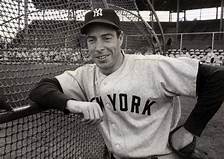THE BASEBALL HISTORY COMES ALIVE BLOG
Please note: As we compose new blog entries, we will now send each one out to all our subscribers as we post them. Here’s a link to see the entire Blog Archives -GL
February 22, 2021
WHAT GAME ARE WE WATCHING?
For longtime baseball fans like us, the game has always meant a great deal and we’ve been watching it for as long as we can remember. But what exactly are we watching now? It certainly isn’t baseball as we’ve known it. Sure, everything evolves over time, including sports, but isn’t always for the better. I often equate baseball with basketball. The hoop game has devolved into one of three-point shots and dunks, while on the diamond were seeing a game featuring home runs and/or strikeouts, plus a parade of relief pitchers on both sides. The beauty of both sports has been severely compromised and perhaps even lost.
Commissioner Rob Manfred continues to say that the game must speed up. Unfortunately, he doesn’t mean the style of play but rather the time it takes to complete nine innings. The lords of the game have tried to do that with new rules, like mandating relievers to face at least three batters or complete an inning before being replaced, and talk about implementing a time clock forcing pitchers to deliver the ball within a certain amount of time. All this is window dressing since most games are still taking more than three hours to play. But so what, as long as the product on the field is interesting and exciting. Unfortunately, it isn’t.
From where I sit the advent of analytics must take much of the blame for so many of the former strategies all but disappearing, strategies we all loved to see. A game that’s closer to a chess match is more exciting than a home run derby. But analytics (with alleged computer numbers as proof) says the bunt is useless. It’s just giving up an out. You don’t see the hit-and-run much anymore, or players taking the ball the other way to beat the omnipresent shifts. The computer geeks also tell us that the home run is the best way to score runs, so it’s perfectly all right for a hitter to strike out two, three, or four times in a game because he’s trying to hit the ball out. And if he happens to connect, then the strikeouts are forgivable.
But are they? The strikeout was anathema to players from the old days. Hall of Famer Joe Sewell fanned just 114 times in a 13-year career. The great Joe DiMaggio hit 361 homers in his career while striking out just 369 times, never more than 39 times in a season. In 1941, the year of his great 56-game hit streak, he fanned just 13 times in 622 plate appearances. Would he have set that great
mark if he was told to work on his launch angle and try to hit more home runs? When Ted Williams hit .406 in 1941 he struck out just 27 times in 606 plate appearances. To have a batting average like that you simply have to put the bat on the ball, not swing and miss.
And then there’s the pitching. The complete game masterpiece by a starter is now a rarity and often caused by pitchers not being allowed to go the distance. They’re restricted by pitch counts and that nonsense that says even if he’s dominating, a starter shouldn’t be allowed to go through the lineup a third time. Look what happened with Blake Snell during last year’s World Series. A potentially brilliant performance destroyed by analytics and a vital game lost. The endless parade of relievers doesn’t help either. How exciting is it to watch a manager walk out to the mound five or six times to bring a new pitcher in from the bullpen? And as the Rays found out in the Series, sometimes even a reliable reliever doesn’t have his good stuff. Enough is enough.
I’m not the only one lodging complaints about today’s game. Baseball’s oldest living player, Eddie Robinson, interviewed for his 100th birthday recently, said that when he sees player after player strikeout and calmly walk back to the dugout that “it’s a black mark on baseball.” Even Miami Marlins manager Don Mattingly chipped in. He said that after the Marlins were eliminated from the playoffs he tuned in to some of the games afterward and said what he saw was “hard to watch.” The game on the field simply isn’t exciting anymore.
Can it be fixed? I hate to say this, but I doubt it. Young fans are being conditioned to watching and becoming excited by home runs and the showboating, posing players. Today’s announcers generally scream their lungs out when a home run is hit. Some of last season’s new rules just might stick, like seven-inning doubleheaders and putting a player on second to begin an extra inning. And I have a feeling there will be more. Maybe if a game goes to 15 or 16 innings it can be decided by a home run hitting contest. And it’s a cinch that the young general managers around the league never even saw the game played the old-fashioned way. Or should I say, the right way.
Like I said, I’m beginning to wonder more and more . . .what game are we watching?
Bill Gutman
As always, we enjoy reading your comments
Here’s a link to see the entire Blog Archives

